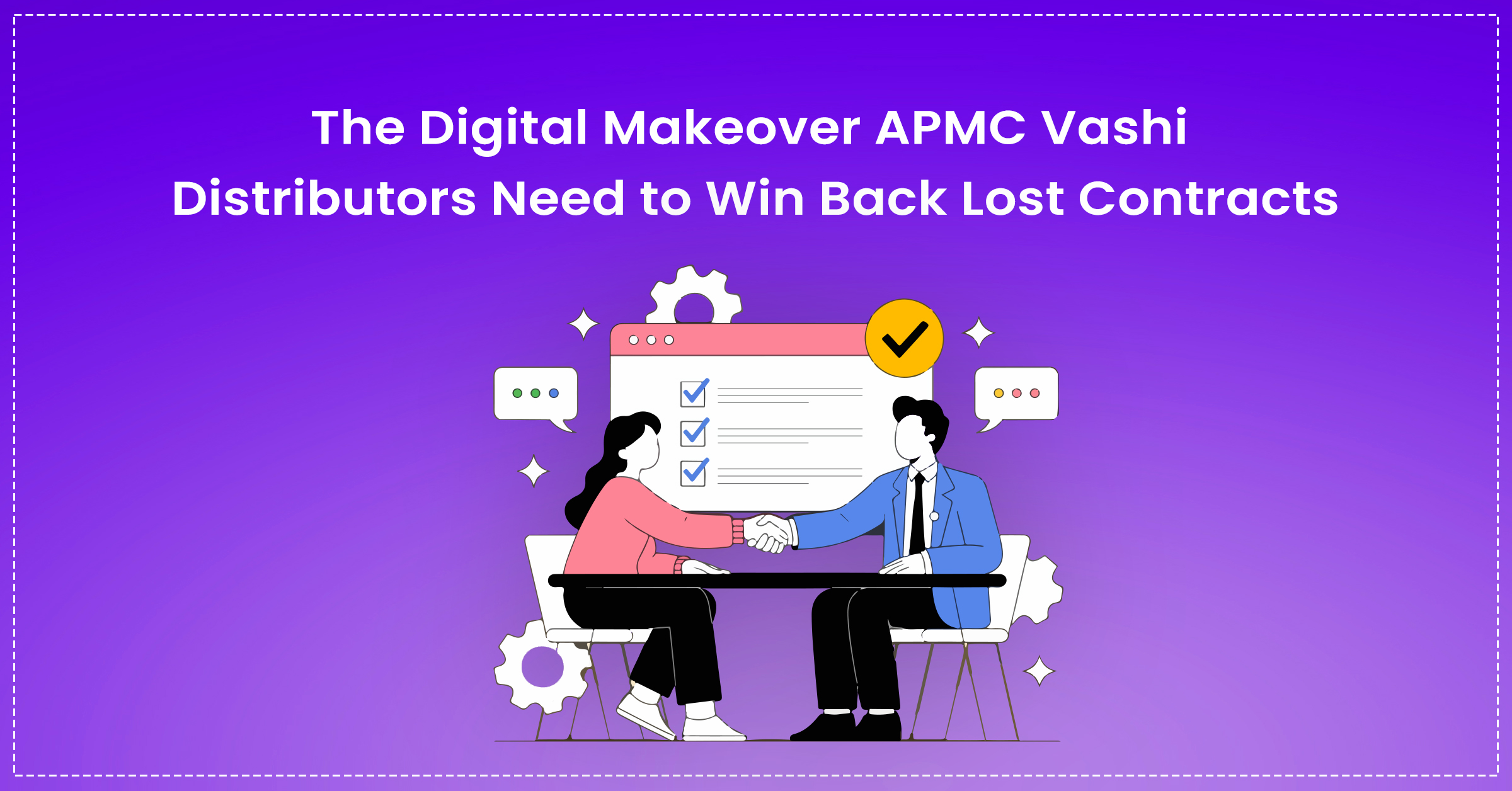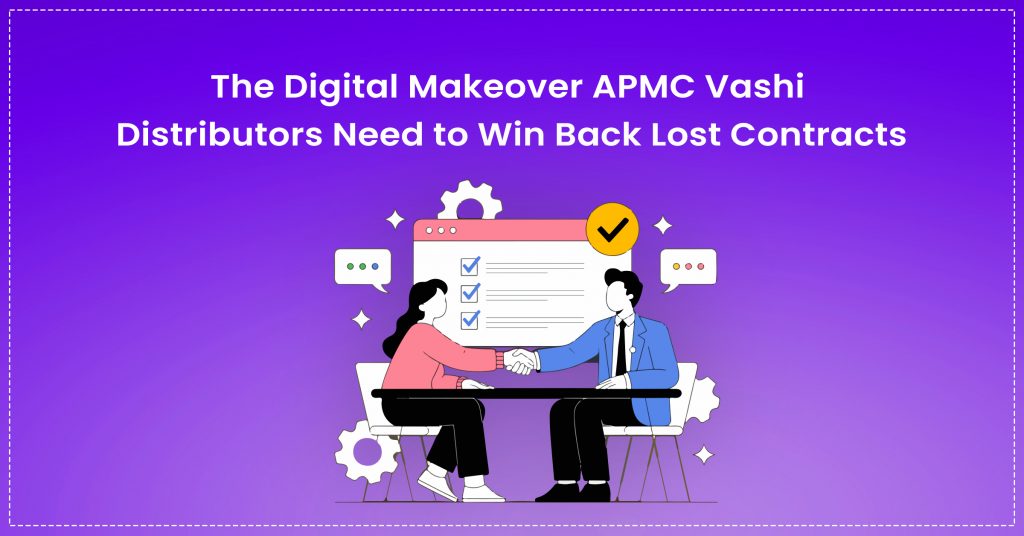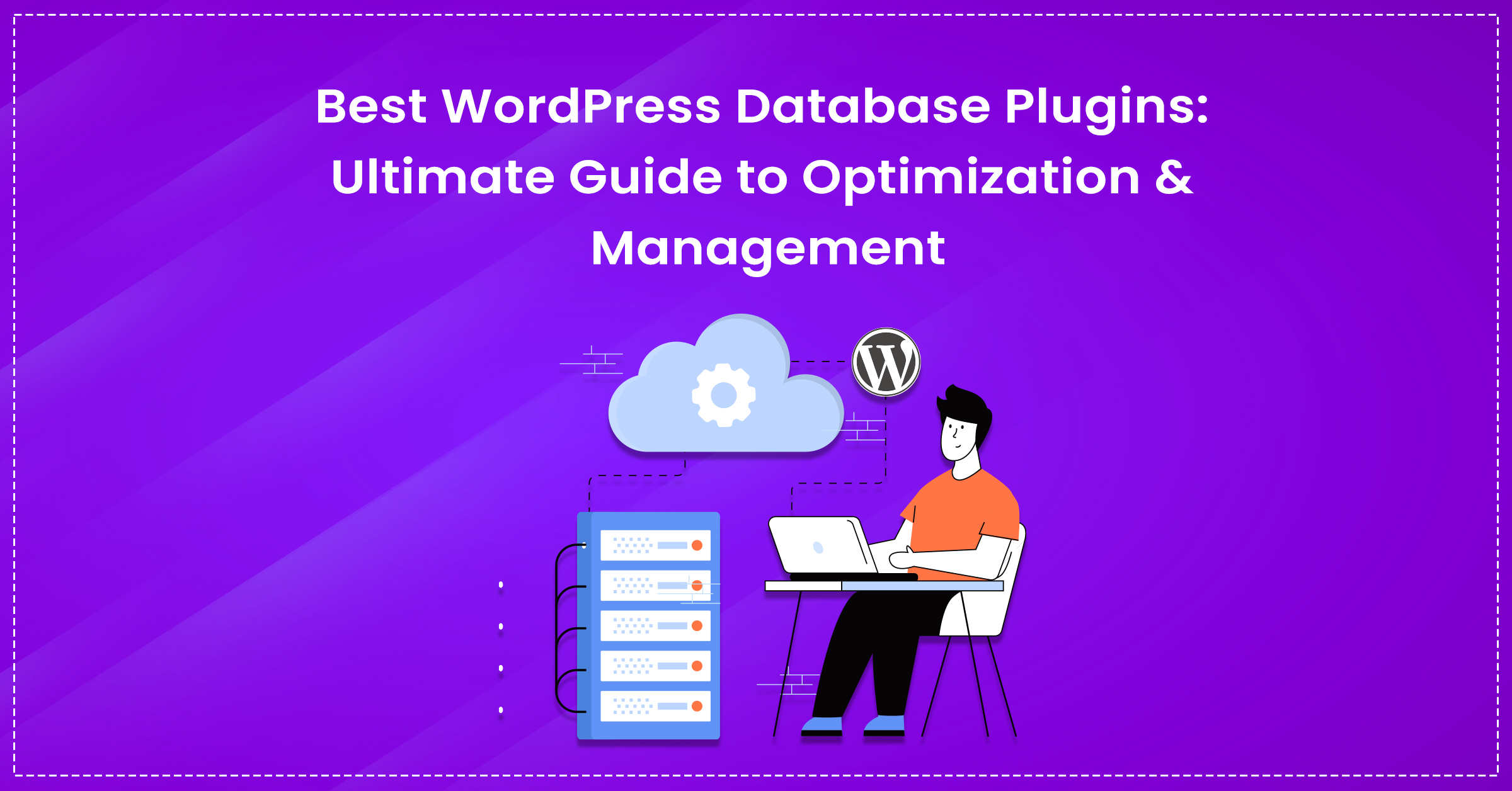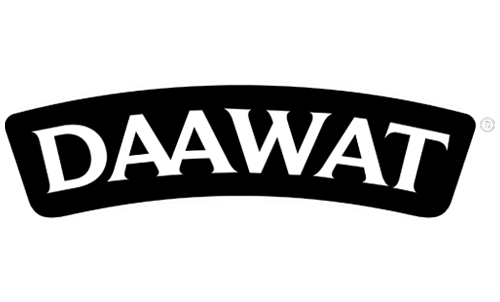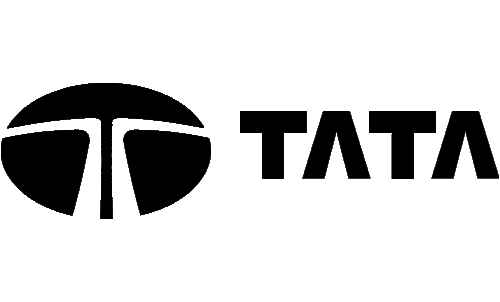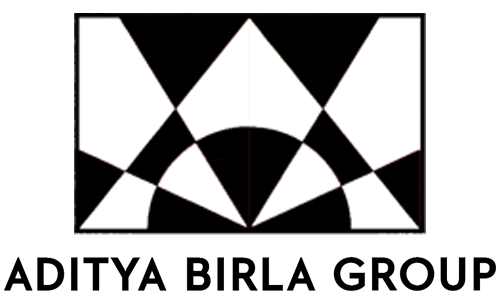Introduction
A wholesale distributor at APMC Vashi handles 200 tons of produce monthly. Annual turnover crosses ₹8 crore. Zero online presence.
Last month, a hotel chain procurement manager searched “bulk onion supplier Navi Mumbai” at 9 PM. Three competitors from Pune appeared. The Vashi distributor didn’t exist online.
That ₹15 lakh annual contract went elsewhere.
APMC Vashi in Sector 19 handles fruits, vegetables, spices, and pulses daily. Thousands of distributors operate here. Most run operations the old way – no digital systems for inventory tracking, manual sales records, zero online visibility.
While competitors use digital tools for everything from stock management to customer acquisition, Vashi mandi distributors rely solely on physical presence and paper ledgers. That strategy bleeds revenue silently.
Overview
APMC Vashi distributors dominate the mandi floor but run on paper and phone calls. Meanwhile, buyers have moved to Google searches, WhatsApp orders, and digital payment tracking. Your competitors aren’t just visible online – they’re managing inventory digitally, automating sales follow-ups, and capturing clients while you sleep. That gap costs you ₹2-8 crore annually in contracts going to distributors from Pune and Thane who simply adapted faster.
This analysis exposes seven critical digital gaps destroying Vashi distributor profits and provides the roadmap to reclaim market dominance.
The Seven Digital Disasters Crushing APMC Distributors
1. Zero Search Visibility
Someone types “vegetable wholesaler near Vashi.” Distributors from Kalyan and Thane appear. Local APMC distributors remain buried.
Search engines prioritize businesses with complete Google Business Profiles. Most Vashi distributors haven’t even claimed their listings.
2. No Professional Online Presence
Most distributors have no website. When buyers search for your business name, nothing appears. No product catalog. No pricing information. No way to verify your credibility.
Modern buyers expect to research suppliers online before making contact. A missing or unprofessional website signals you’re not serious about business growth. Even a simple, well-designed website establishes legitimacy and captures inquiries around the clock. A Vashi kanda-batata specialist implemented Google Business optimization. Within three months, online inquiries jumped to 25 monthly. They closed ₹1.8 crore in contracts from digital leads.
3. Missing from B2B Platforms
IndiaMart generates 50,000+ daily agricultural product inquiries. TradeIndia connects thousands of buyers with suppliers. Udaan powers restaurants across India.
APMC Vashi distributors? Either absent or have profiles gathering dust since 2020. Your competitors list products daily and respond within minutes.
4. Social Media Graveyards
Instagram, Facebook, and YouTube reach thousands of restaurant owners, hotel managers, and retail buyers daily.
APMC distributors? Either completely absent or posting occasional festival greetings with zero engagement.
Regular content builds brand awareness. Recipe videos using your produce. Behind-the-scenes mandi footage. Seasonal availability updates.
Your competitors create content weekly. You stay silent and forgettable.
5. Disconnected Sales Channels
Your sales team meets buyers physically at the mandi. Excellent relationships. Strong negotiations. But what happens after they leave?
No digital record of conversations. No follow-up reminders. No order history tracking. Every interaction lives in someone’s memory or a scattered notebook.
When that buster calls next week, you’re scrambling to remember their last order. Pricing details? Previous delivery dates? Special requirements? All lost.
Modern wholesale operations use custom sales apps built for B2B. Sales teams log every interaction instantly. The system tracks buyer preferences, order patterns, and payment histories.
6. No WhatsApp Marketing Strategy
Most distributors use WhatsApp like a phone – one message at a time to individual buyers.
No broadcast lists. No automated rate updates. No systematic communication about fresh arrivals or seasonal stock.
Buyers want instant updates. “Alphonso mangoes arrived today.” “Tomato prices dropped ₹5/kg.” “Premium quality onions available – limited stock.” All these message notification can be connected to different events within a sales app.
Competitors send organized broadcasts to segmented buyer lists. Hotels get premium produce alerts. Small retailers get budget options. Everyone gets timely information.
You’re manually typing the same message 50 times while they reach 500 buyers in seconds.
7. No Inventory Management System
When did you last know your exact stock levels without physically checking? Which products are moving fast? What’s rotting in storage?
Most distributors track inventory mentally or in paper ledgers. No real-time visibility. No wastage alerts. No data on what sells when.
You can’t optimize what you can’t measure. Competitors use digital systems to track every crate, predict demand, and minimize losses.
Meanwhile, you’re losing ₹5-15 lakhs monthly to spoilage, overstocking, and missed reorder opportunities. The produce you forgot about is costing you more than you realize.
Building Your Digital Dominance
Phase 1: Establish Territory (Week 1-2)
Claim your Google Business Profile completely. Add photos of your shop. Upload produce images. Collect reviews from regular buyers.
List on IndiaMart, TradeIndia, and Udaan. Upload product catalogs. Update pricing weekly. Respond to inquiries within 2 hours.
Ensure consistent information everywhere. Same business name, address, phone number across platforms.
Phase 2: Create Your Website (Week 3-8)
Your website needs three elements. Speed that loads under 3 seconds. Clarity showing what you supply. Clear contact forms and WhatsApp integration.
Include location-specific content: “Serving hotels and restaurants across Navi Mumbai, Thane, and Panvel.” Geographic keywords matter for local searches.
Phase 3: Content Creation (Ongoing)
Publish seasonal guides on Instagram and Facebook. “Best Storage Practices for Monsoon Vegetables.” Share weekly price trends through WhatsApp status.
Create buyer education content. “How Hotels Can Reduce Vegetable Wastage by 30%.” “Choosing the Right Onion Variety for Restaurants.”
Post twice monthly minimum. Instagram reels showing product quality. Facebook posts with pricing trends. WhatsApp status updates with fresh arrivals.
Your expertise is valuable. Share it where buyers are already scrolling.
Phase 4: Social Proof (Ongoing)
Request Google reviews from hotel clients. Ask restaurant owners for testimonials. Video testimonials beat written ones.
Showcase success stories. “How We Supply 500kg of Fresh Vegetables Daily to the XYZ Hotel Chain.”
Phase 5: Local SEO (Ongoing)
Optimize for location keywords. “Wholesale vegetable supplier APMC Vashi” instead of generic terms. “Bulk spice distributor Navi Mumbai” works better.
Build local backlinks. Get listed on Navi Mumbai directories. Join trade associations online. Create service area pages for Vashi, Nerul, Belapur, Kharghar, Panvel.
Phase 6: Lead Capture
Offer downloadable price lists. Seasonal availability calendars. Bulk order discounts. Integrate live WhatsApp chat. Add callback request forms.
Send automated follow-ups. Weekly price updates. New product availability. Seasonal discounts.
Digital vs Traditional Comparison
| Aspect | Traditional | Digital-Enabled |
|---|---|---|
| Lead Generation | Market visits only | 24/7 online inquiries |
| Geographic Reach | Market visitors | Pan-India buyers |
| Communication | Phone during hours | WhatsApp, email anytime |
| Sales | Only during market visits | 24/7 ordering via app with real-time pricing |
| Client Retention | Relationship only | Automated + relationship |
| Growth Potential | Linear | Exponential |
Ready to Dominate Digital Discovery?
Eiosys specializes in helping APMC Vashi distributors establish a powerful online presence, simple sales apps, and digital systems that generate real inquiries. We understand wholesale dynamics and APMC operations.
Schedule a consultation at our office. Explore our website development services designed for wholesale businesses.
Frequently Asked Questions
Basic visibility improves within 3-5 weeks through Google Business optimization. Meaningful institutional inquiries start within 2-3 months. Long-term authority building takes 6-10 months but creates compounding returns.
Absolutely. 75%+ of institutional procurement managers begin supplier searches online. They verify credibility through reviews before visiting markets. Being visible during research is critical.
A functional website costs ₹40,000-1,50,000.
The higher-end websites include e-commerce store creation and payment gateway integration.
Monthly marketing activities start around ₹10,000-25,000. Many distributors begin with Google Business optimization, then expand based on results.
Track monthly inquiry volume from online sources. Monitor conversion rates from digital leads. Compare cost per acquisition against traditional methods. Track orders collected outside of regular mandi hours through digital channels. Most distributors see positive ROI within 4-6 months.


